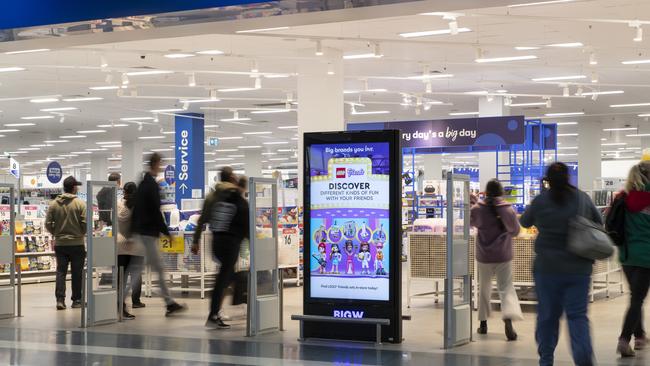The not-so-secret rise and rise of retail media networks
Major retailers have always had a powerful, and some would say outsized, relationship with brands, and the rise of so-called retail media networks has marketers asking if that power imbalance is going to grow.

Major retailers have always had a powerful and, some would say dominant, relationship with brands, and the rise of so-called retail media networks has marketers asking if that power imbalance is going to grow.
According to its latest results, issued last Wednesday, Woolworths saw the sales from its digital division WooliesX (which includes e-commerce) drop more than 4 per cent, but revenue from its digital and media division, which includes retail media arm Cartology, recorded revenue growth of 8 per cent.
While that line item on the profit report is just $675m versus overall Woolworths sales of $33bn for the half, there is a strong precedent for the company to see Cartology as a future driver of growth. Retailers globally have been investing in building out their own advertising networks – called Retail Media Networks (RMNs) – and are enjoying significant margin benefits as a result.
Amazon, for example, earned $38bn in advertising services in 2022. That’s more than the entire global newspaper industry, according to respected tech analyst Benedict Evans. As a division, it is already highly profitable, generating a greater operating profit than the famed Amazon Web Services division, Evans calculated.
New data from the World Advertising Research Centre (WARC), estimates global retail media is forecast to be the fastest-growing channel in 2023, reaching $122bn.
For brands, it presents a challenge, with the US-based Association of National Advertisers (ANA) finding brands see RMNs as a “have to buy” versus a “want to buy”, according to a report released in January. It found that 42 per cent of advertisers are “on the fence” about their investment, even as RMN’s progress from “infancy and childhood stages” into “adolescence”.
While the ANA report found RMNs were “seen as recession-proof, less prone to budget cuts in more challenging economic times, and a way to counter potential shopper shifts to store brands,” there was a concern that they may cannibalise investment from essential brand building equity and growth to driving short-term sales.
Professor John Dawes of Ehrenberg-Bass Institute for Marketing Science at the University of South Australia said the networks were indeed catching the eye of marketers in Australia – but there’s a catch.
“RMNs are certainly growing and seen as more and more important by marketers. And they promise high ‘ROI’ on ad spend. But the hidden problem is low reach, and that they’re unduly reaching people in the market now,” said Mr Dawes.
“It’s similar to the traditional idea of being in retailer catalogues and depending on in-store promos. You’re (mostly) hitting people who are buying the category now. So if marketers devote more and more of their ad budget to RMNs, they will erode their reach among the mass of potential buyers who aren’t in the market now; and consequently won’t build the long-term mental availability that distinguishes big brands from small ones.”
Mr Dawes also said that marketers shouldn’t lose sight of playing the long-term marketing game. “Brand owners need to evaluate RMNs in the same way they should look at all media: what reach does it offer, and does it get me in front of people who I’m not reaching already. Not just ‘does it have a high conversion rate’.
“Also, a key question for marketers is: ‘Will devoting more of my ad dollars to some key RMNs make my brand more vulnerable in the long term – will it mean eventually retailers won’t need me as much as I need them’,” he said.
“Retail media potentially offers scope for creativity but given the usual emphasis on short-term conversion, this is probably an underplayed aspect of advertising in this sort of channel.”
Mike Tyquin, managing director of Cartology said that while instore or online shopping may shift, grocery shopping is the one constant to be counted upon.
“While digital engagement reflects ongoing strong growth, we‘re still seeing customers return to store with an average of 5.7 visits per customer, each month.
As the customer journey is no longer linear, retail media is uniquely placed to connect brands to customers where and how they choose to shop.
“For brands, we can provide the opportunity to reach customers as they move from inspiration to transaction with off-network platforms including YouTube through to the digital and physical store experience. We have a unique data offering powered by first party customer insight for precise customer targeting, that enables clients to understand campaign impact and in turn make budgets work harder.”
It’s Mr Tyquin’s hope that Cartology can enhance the customer experience and offer inspiration on their shopping journey, which includes multiple touchpoints both on and off-screen.
“Creativity and attention are an important factor in driving short and long-term results for our clients,” he said.
“We are always looking for creative ways to engage in a way that enhances the customer experience whether it’s through Fresh recipe creation and woolworths.com.au branded shop, to in-store sampling.”






